LESOTHO CONFLICT OP-ED
The bloody threads that bind Basotho gangs to zama zamas and Famo musicians in remote mountain outposts
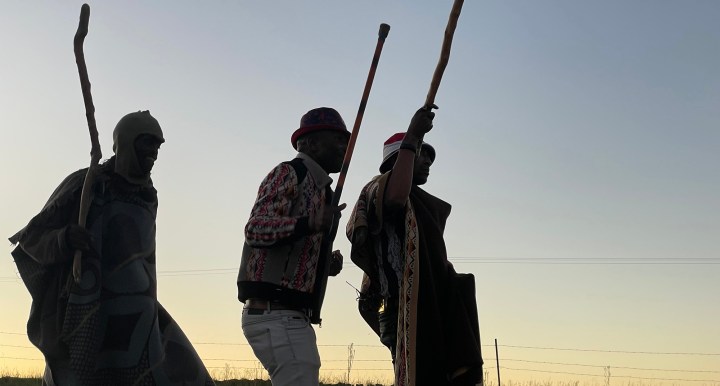
In remote parts of Lesotho, feuds caused by jealousy over the musical success of accordion-playing Famo musicians have become hopelessly entwined in the battles between rival zama zama miners competing for the remains of scarce gold in the mined-out rock stopes of South Africa’s mines. The brutality has become all-pervasive.
The pale heads of the long grass shift in the wind that comes off the mountainside. The late afternoon sun catches the seed fronds and makes them glow against the dark sheen of the gravestones. The shadows move eerily across the polished rock face and the bright, carved names of the dead.
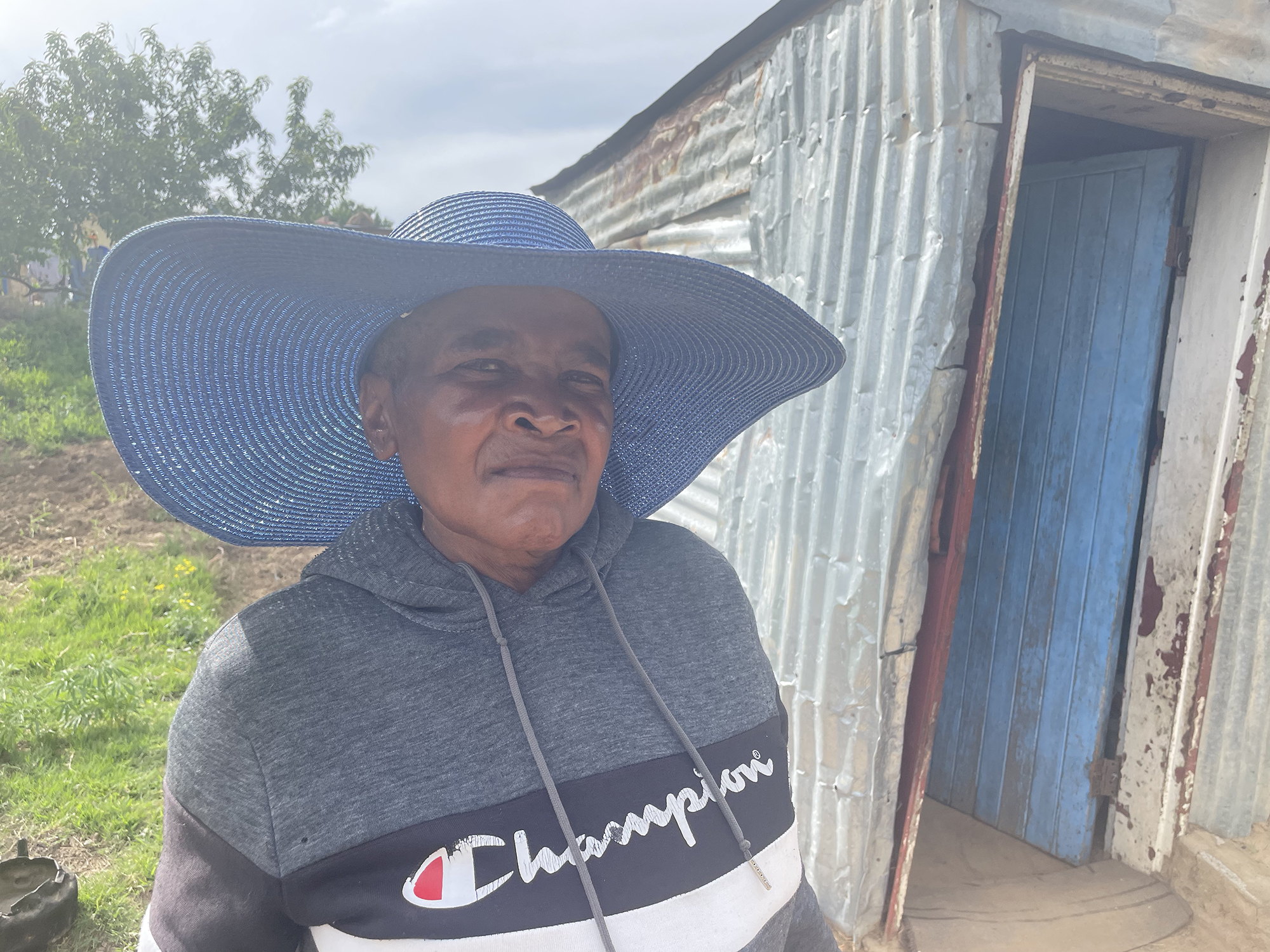
Mathabang Moliko mourns the death of her son, Thabong, whose body was thrown down an abandoned mine shaft. (Photo: Supplied)
We are in the village of Ha Raliemere in the valley that leads to the town of Mafeteng. The wind blows gently as we stand in the family graveyard of Mathabang Moliko, 67.
Her oldest son, Thabong, left Lesotho to work as a zama zama in South Africa in 2013. He never came back. “I cannot bury him here with his ancestors,” Mathabang says. “I don’t know where his body is.”
She unravels the story of what happened to him – or, at least, as much as she has been able to find out. “He told us that he was doing something with collecting sand, and selling it, and he was playing the koriana (accordion).”
She looks at me. “That’s where all the issues originated because they started growing jealous of one another, and they didn’t want to see one another succeed. Some were jealous that he succeeded. He was abducted and tortured for a week.”
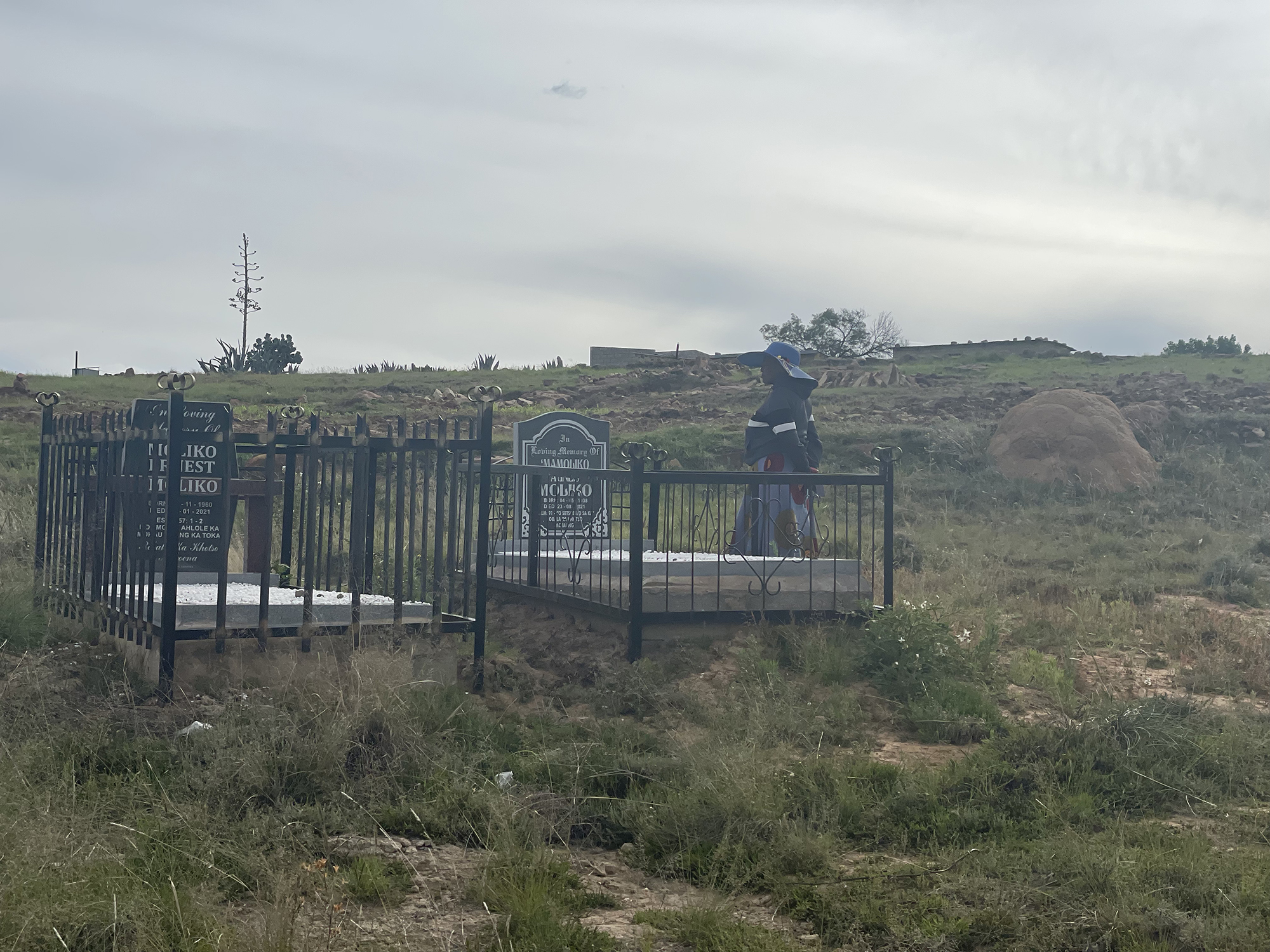
Mathabang Moliko in her ancestral graveyard. Her son Thabong will not be buried here as his body was never found. (Photo: Supplied)
The attackers threw his body down a mine shaft. “We didn’t want to believe that he was dead. We wanted the truth, but the police said there is no way they can retrieve his body. We did not even have a gathering to observe his death.”
She walks away from the graveyard as the sun sinks through the sky, casting dark humped shadows of mountain peaks over the village. The only sound is the hollow tinkling of the cow and sheep bells as the herdsmen drive the animals home.
In her one-room tin shack she picks up a blunt kitchen knife with a plastic handle and she goes to cut a few leaves of spinach from the edges of a neighbour’s garden – one of a number of small kindnesses that allow her to survive.
Without the money Thabong sent back from the mines, her life has grown unimaginably hard. She is a mother forever grieving her lost son, unable to pay the last respects of her culture and denied the comfort of giving him the very last touch of her love. His was an awful death, tormented by the cruelty of his attackers, his body lost forever in the depths of an abandoned mine.
His is the story of too many young men from Lesotho. With a poverty rate at 50% and unemployment rates at 33% in 2021, according to the African Development Bank, there is little to keep them at home. So, they go where their fathers and grandfathers went – the gold bearing reefs of South Africa. They work in terrible conditions in the estimated 16,000km of underground tunnels of the abandoned mines that once produced some 40% of the gold ever mined in the history of humanity.
Those days are long gone. The network of criminality that extends from the foot soldiers like Thabong to the international syndicates that grow rich off their perilous, slave-like labour, has become deeply entrenched across the economies of southern Africa as a whole.
It is in valleys like this where the A2 runs down the western edge of Lesotho, connecting the capital, Maseru, to Mafeteng and further south to Mohale’s Hoek that the human cost of these economic statistics is so deeply apparent. We have come to make a film for Al Jazeera about the stories the people here are living through.
There is one detail that stands out strangely in Mathabang’s broken-hearted story of gold and ruthlessness – the koriana, the accordion. It is a Western instrument that arrived in Lesotho in the late 19th century and has now become a deep part of Basotho tradition. Mostly men, but some notable women too, learn to play this complex instrument with its deep, haunting tones. The music they play is known as Famo.
It developed on the green hillsides and under the red and tan sandstone cliffs that surround these valleys. Some, like author Zakes Mda, in his eponymous novel, have called them “Wayfarers’ Hymns.” Herdsmen and travellers, often alone in the mountains, would compose songs of home and love and their anger at their enemies in rich, intertwined fugues of humour, nostalgia and bitterness.
The music grew and entered the very soul of Lesotho. It was not only filled with meanings that people could relate to, it became both an escape and a form of identity for a people burdened with poverty and very few ways to alleviate it.
As the rhythms spun their sometimes mournful and sometimes joyful threads through the memories and hopes of people across the land, it became woven into another cherished tradition – that of the colourful blankets that both men and women wear wrapped closely around their shoulders and fastened with giant chrome safety pins.
Famo musicians became icons in the streets of the towns and on the slopes of the lonely valleys. The music brought fame but little real money and, as Mathabang told us, jealousy became a major factor mingled in with the fandom and excitement that the musicians inspired. The bitterness that musicians flung at one another turned violent.
The bloodshed has its roots in the gangs of Basotho miners in the 1940s in South Africa who called themselves the Marashea – the “Russians” so named after the crushing Soviet defeat of the Germans in WWII.
The reasons for it turning so deadly are not clear, but it erupted into serious conflict in the early 2000s, after one Famo musician allegedly shot another, setting off a cycle of revenge.
Some say the two main gangs, Seakhi and Terene began as funeral societies. How these supposed financial self-help groups began their lethal feuding is vague, but in the last 20 years dozens of singers, performers, DJs, wives and children have been killed. And now that these Famo gangs have become aligned to illegal mining gangs in the terrible wars over gold in South Africa’s Reef, even more people are dying.
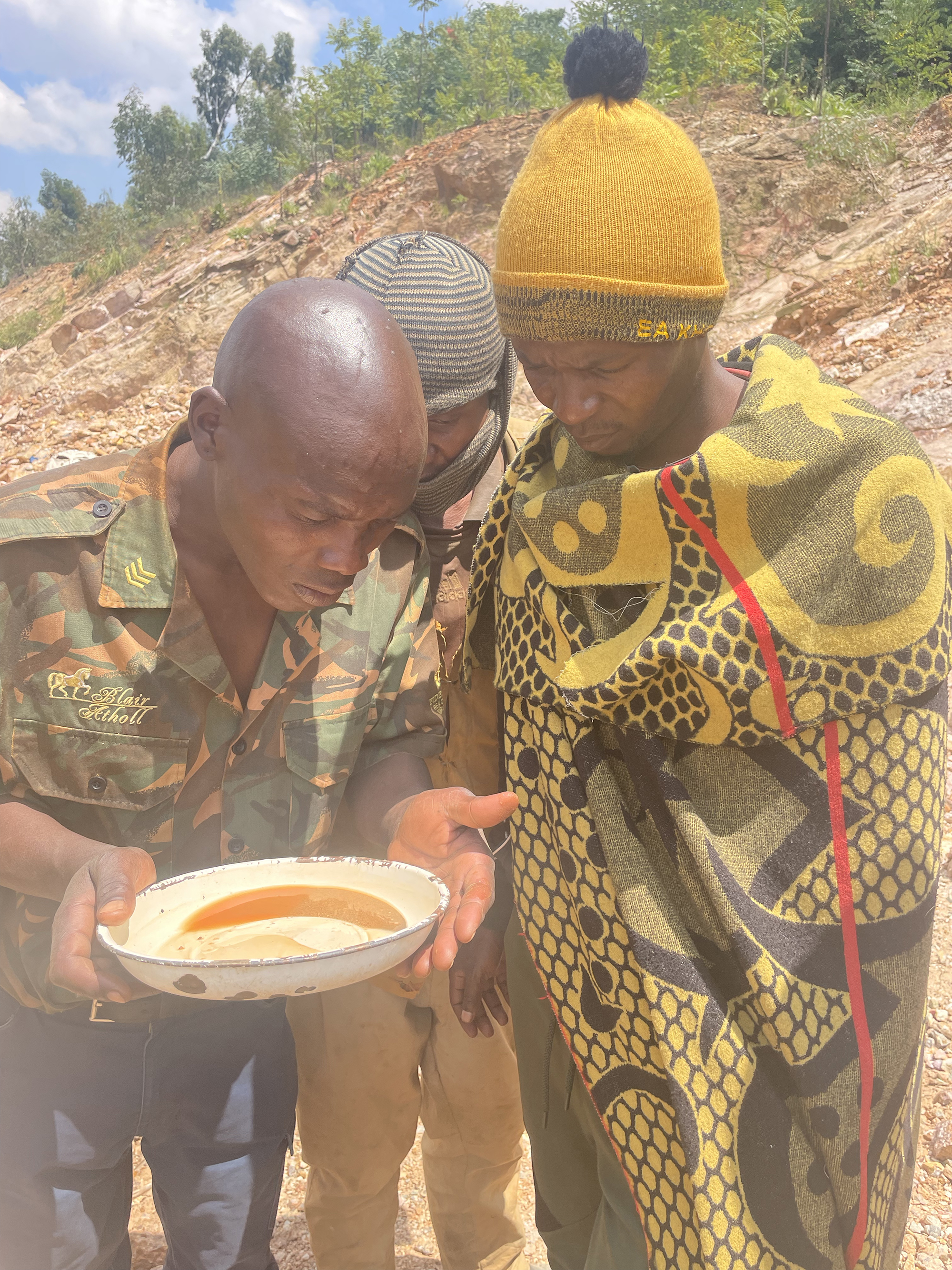
Duma Leqela (in yellow blanket) is a member of the Terene ea Chakela gang and is both a zama zama and a Famo musician. (Photo: Supplied)
Feuds caused by jealousy over musical success become hopelessly entwined in the greed over the remains of scarce gold in the mined-out rock stopes of South Africa’s mines.
The brutality has become all-pervasive.

A house in the village of Ha Molungoa, which has been abandoned because of Famo killings. (Photo: Supplied)
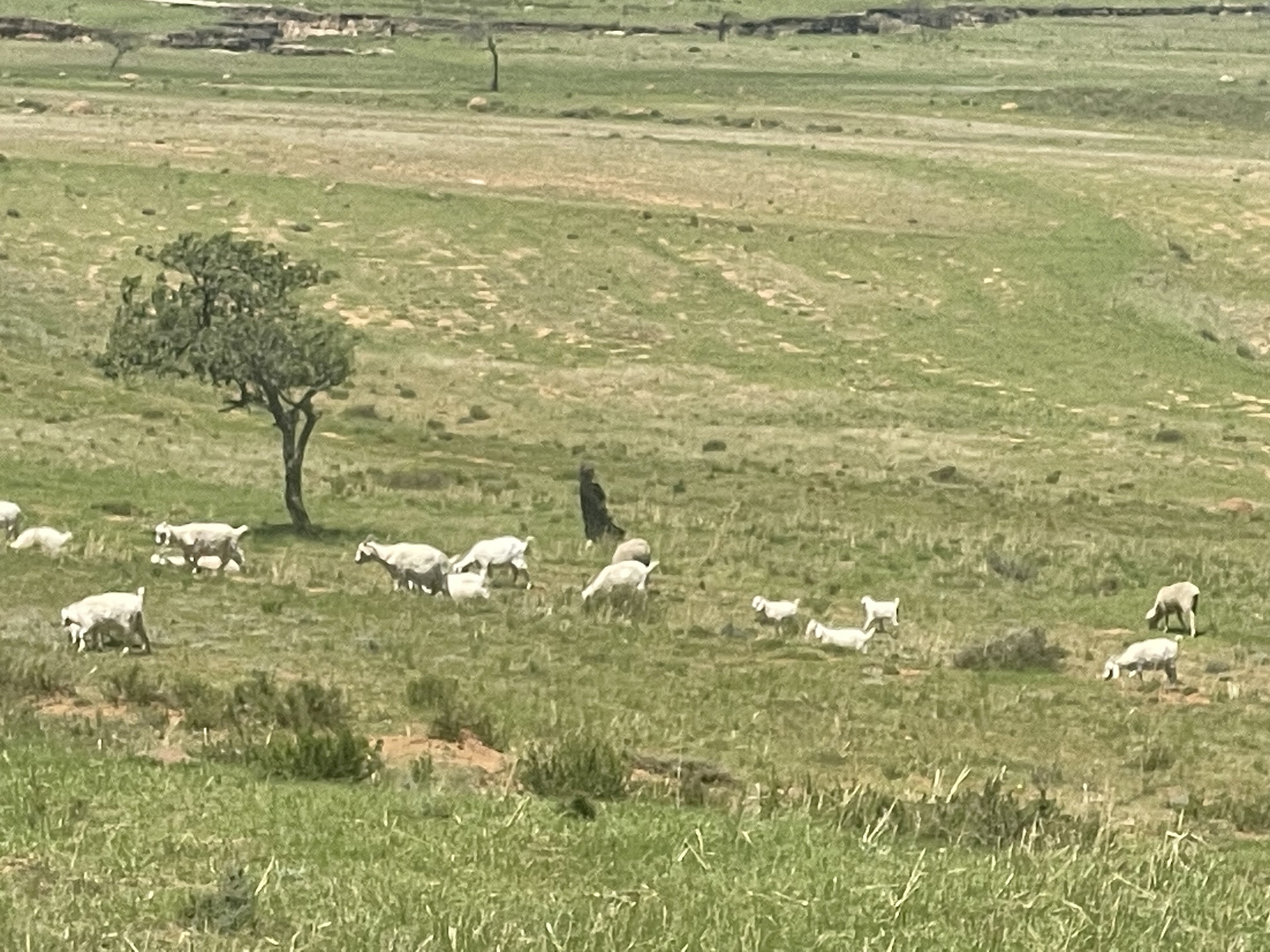
A shepherd directed us to the village of Ha Molungoa, which has been abandoned because of Famo killings. (Photo: Supplied)

Inside a derelict house in the village of Ha Molungoa, which has been abandoned because of Famo killings. (Photo: Supplied)
A few days later we cross the A2 highway, further north, branching off onto a dirt side road near the town of Rothe. A shepherd stands next to a single dark tree as he tends his flock of fat, white goats. We are looking for the village of Ha Molungoa which we have been told has been abandoned because of Famo killings.
The road is so bad we have come to a dead end. Above us looms a rocky escarpment against a pure blue sky, streaked with wisps of summer cloud. My colleague sends a picture of the escarpment to a contact in Maseru who confirms it’s the same mountain.
He shouts across the veld to the shepherd who tells us that, indeed, this is the village from which people have fled.
We leave the car and walk up the scrub-tangled slope. A settlement of mostly traditional Basotho stone houses emerges from the mountain side as we ascend. At first glance it is gorgeous, the neatly dressed stone walls nestle in the green grass at the foot of the escarpment. It is only when you look again that you see the destruction and abandonment. The honey-coloured stones are tumbled into the shadow of roofless walls. A brick house, larger than the stone dwellings, has smashed windows and rotting lace curtains flutter out from the jagged glass in the slight breeze.
Inside the houses show the signs of panicked flight. Doors have been wrenched open, furniture kicked aside, and a few bullet holes scar the plaster walls.
Mattresses, kitchen cupboards, crumpled, filthy clothes and a child’s shoe lie scattered across the floors. The village and its score of empty houses reminds me of those I have seen at the frontlines in war zones where people have fled, caring only to save their lives.
Not everyone has left, though. We find one family gathered around a small shack with a few chickens running through the dirt and grass around it. They peer at us anxiously. We walk slowly over to speak to them. They are clearly traumatised.
“There is nothing we can tell you,” one of the teenaged boys says. “You must find the chief. He is the only one who can speak about what happened here.”
He gives us directions to the chief’s house, and we descend the mountain. We jolt agonisingly over a rough, donga-rutted road until we arrive at a neat farmhouse on the other side of the mountain.
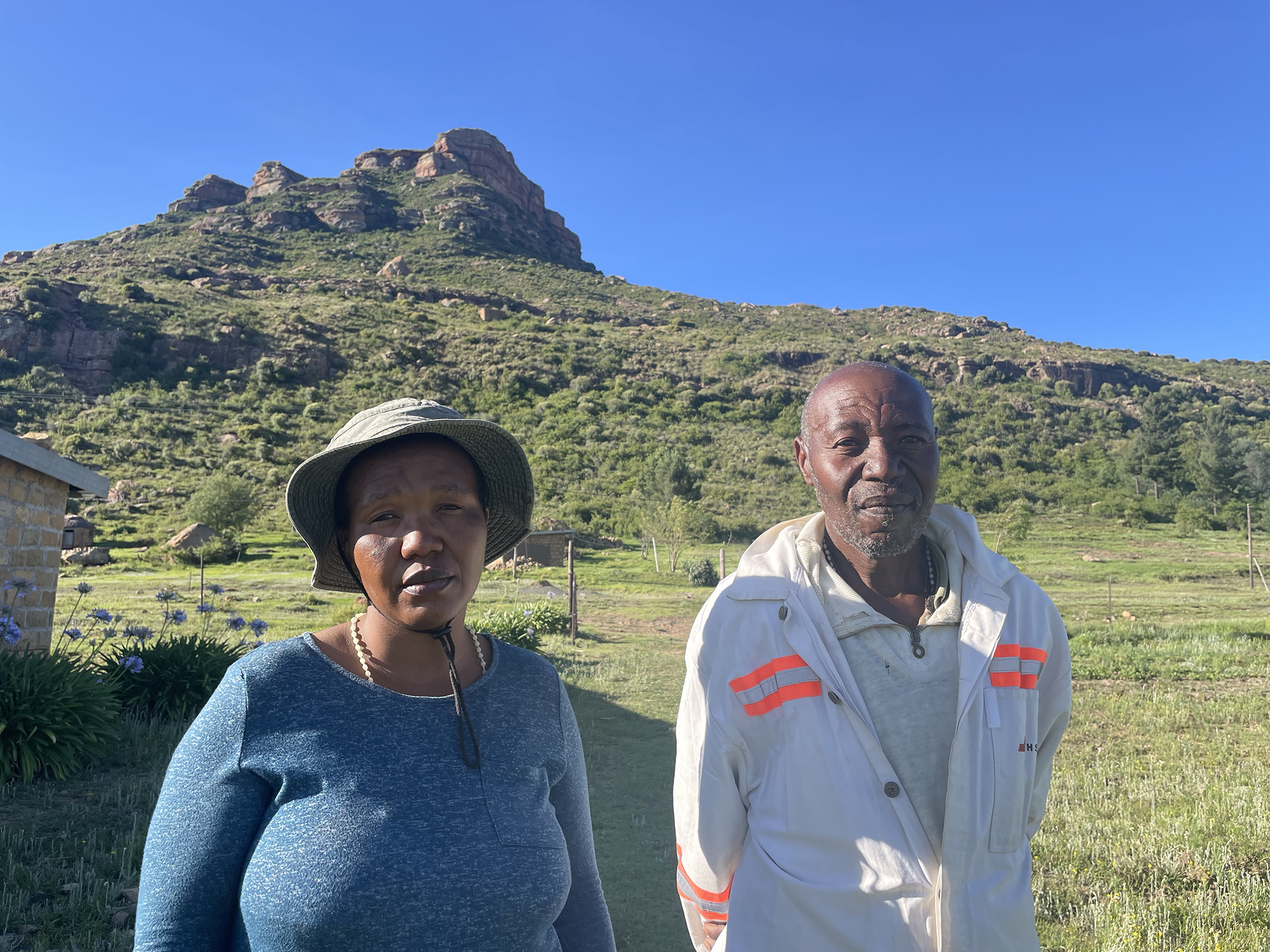
Chief Chobokoane Phamotse (67) and his daughter-in-law Mamolefi (42) told us of the destruction of the village of Ha Molungoa. (Photo: Supplied)
Inside are Chief Chobokoane Phamotse, 67, and his daughter-in-law Mamolefi, 42. They tell us how the village and its peoples’ lives have been destroyed by mass murder linked to Famo gangs. The worst attack was in 2018 which left 15 people dead, four of them children.
What began as a family feud, its origins now long forgotten, turned into utter horror when one of the families brought in Seakhi gang members. Mamolefi explains what happened: “They told the villagers that those who stood against them would be regarded as ‘Chakela’ [an opposing gang] members. This fight spiralled out of control.”
The strain of remembering is too great for Chief Chobokoane. Tears flow down his cheeks as he tells us how they lived in complete terror. “At night we would run into the mountain. There are caves there, we used to hide inside them. We could hear gunshots from the other side of the mountain. In the morning, the police were called and took the dead bodies.
“What does it tell you when a 10-year-old, a 12-year-old, and their father are killed? This is a horrific situation… It’s horrific.
“I used to work on the mines and I saw people dying in rock falls. But the things I have witnessed here fill my eyes with tears. This has been a horrific village.”
The chief and Mamolefi take us outside to point at the mountain that looms over the village. Every night during those times the villagers would flee into its rocky slopes and hide in caves. Both of them break down as they talk.
“There were stories of our forefathers,” the chief says, shaking his head, “when we heard that people would hide in the mountains, hiding from cannibals. Now we found ourselves in a similar situation.”
Mamolefi sobs openly. “When you went to the mountain you would lose hope because you didn’t know whether you would come back alive. We would only think about the children and we would take them to our neighbouring villages. The women would sleep in the bushes. I ran so hard that when I found a place to hide, I abandoned all hope of being alive because I was alone. When I recall all those things my heart just breaks.”
Finally, the government sent in the army to patrol, and the killing stopped. But the fear remains. The soldiers are gone now, but so are most of the villagers. “There are only 13 families this side and five on the other,” the chief tells us.
The emptiness of the abandoned houses is what seems actually to have stopped the carnage. The feud has simply burned itself out, leaving these survivors suffering from post-traumatic stress.
“He is just trying to be strong,” Mamolefi says of her father-in-law, “but he is not okay.”
She points to the neat stone cattle kraal in the front of the house. “There were days when he would sit in the kraal and not even leave the yard because he saw a man he knew being shot in the wild while he was herding the cows.”
Chief Chobokoane finds it hard to explain his inner turmoil. “I used to suffer from an illness that caused me to collapse. I live with fear. It has made me humble. Every day I am vigilant and watch out for anything suspicious.”
These deep shadows of murder and the power that comes with the fear it instils has found its way deep into Lesotho’s society. Famo gangsters are regularly seen handing out money at political rallies, no one dares speak out against them. It even allegedly stretches up into the highest ranks of power. In 2021 former Prime Minister Tom Thabane was accused of hiring hitmen to kill his estranged wife. The charges were dropped after a key witness mysteriously disappeared.
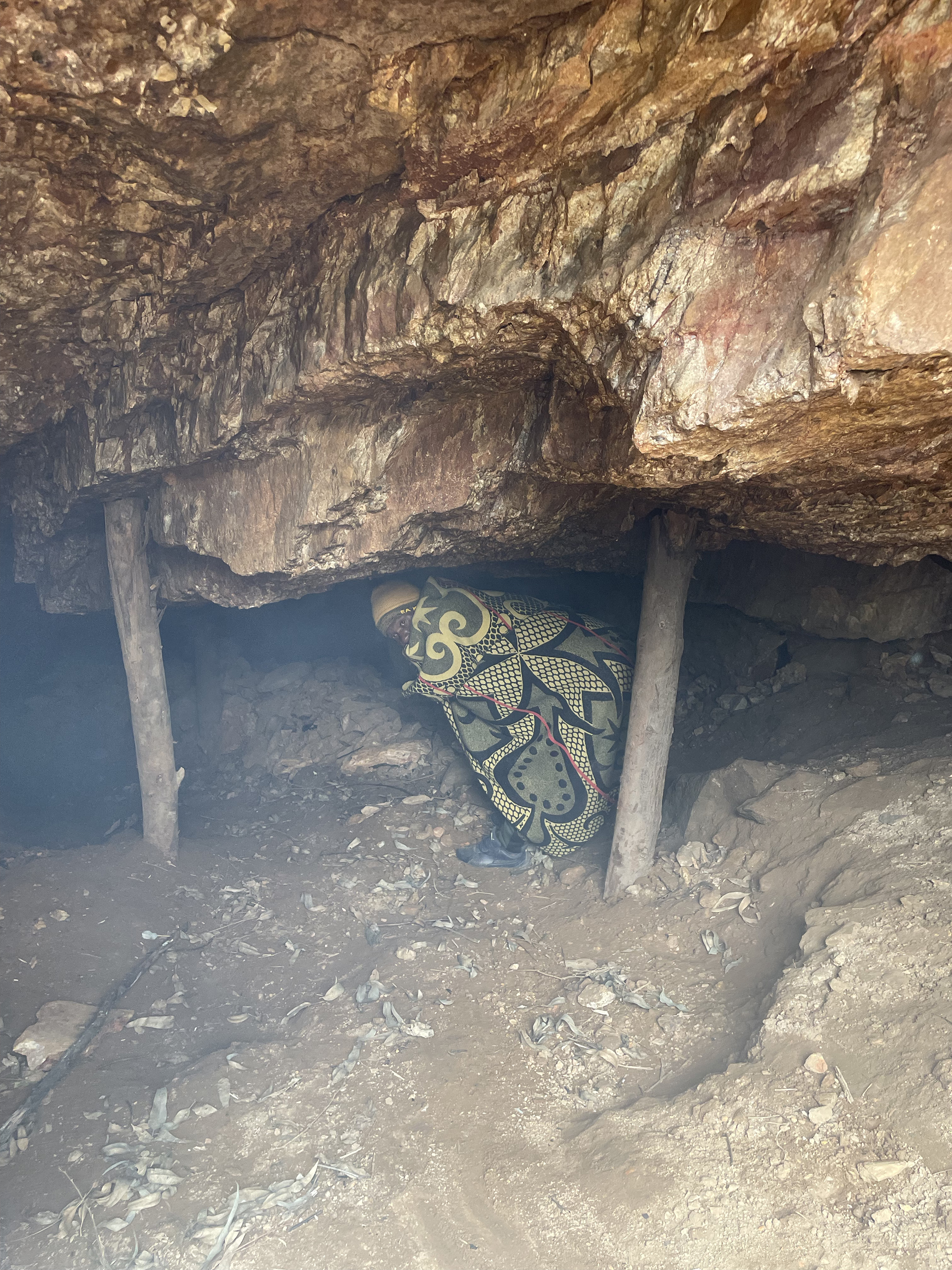
Duma Leqele underground. He is a member of the Terene ea Chakela gang and is both a zama zama and a Famo musician. (Photo: Supplied)
‘Lehlanya’, ‘the madman’, has fled to South Africa
The main suspect, though, Sarel Sello, known as “Lehlanya”, “the madman”, who is the leader of a Famo gang known as Terene ea Khosi Mokata, has fled here to South Africa.
At a secret location on the outskirts of Johannesburg we meet Duma Leqele, 42, inside a nondescript hut that could be in any informal settlement. He is a member of Terene ea Chakela, a rival gang to that of Lehlanya’s group. He is both a zama zama and a Famo musician who has produced his own music that he sells on CDs.
“I know Lehlanya very well,” he tells us. “He started fighting with us for a long time and he killed a lot of our members.” He gestures around the inside of the hut with its simple iron beds and a single candle for light.
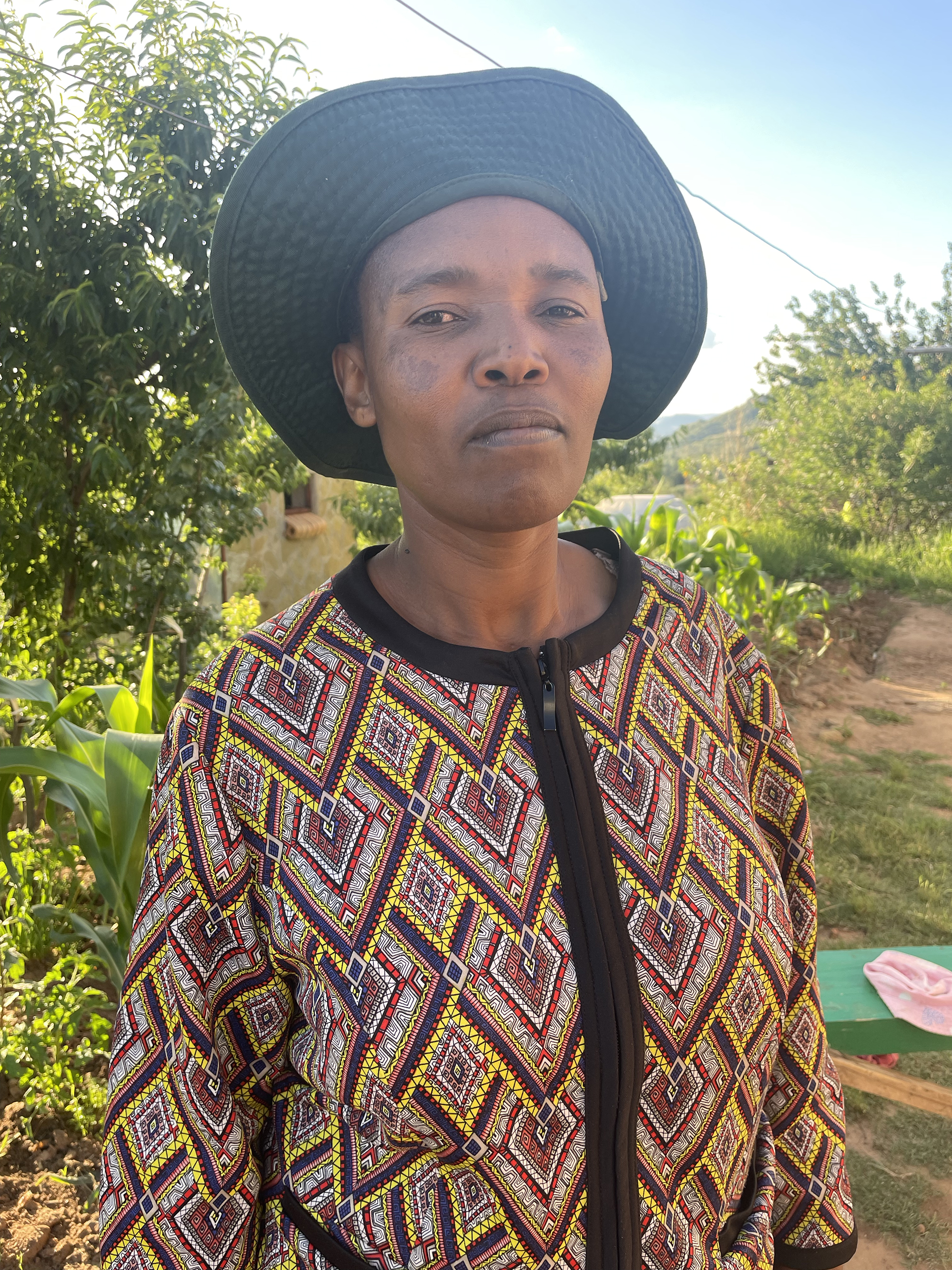
Madieketseng Leqele, sister of Duma Leqele, a member of the Terene ea Chakela gang. Duma regularly sends her money. (Photo: Supplied)
“I don’t live here. I only come here when I have to work. Not even my colleagues and fellow gang members know where I live. They only see me when I am at work [underground].”
To dismiss him as a mere gangster is to fail to understand the layers of powerlessness and poverty that define his life. Back in Maseru we met his sister Madieketseng Leqele (40) and his nieces Lieketseng (19) and Naledi (2). He sends money back to them every month, as well as supporting his own wife and children.
While she hoed her small mealie patch she told us about her brother and how she feels about him and what he does. It is clear they love him deeply and depend on him and the money he always sends them.
“I worry a lot because sometimes we get news that some of them have been found dead in the illegal shafts and whose next of kin are being sought.”
In a quiet, unhurried way she outlines the reality of his situation.
“Returning [to Lesotho] would also be pointless because he is deeply involved with what he does. It may give the people he works with the impression that he is passing on information or has turned his back on the people he works with. This could lead to them hunting him down until they find him and kill him.”
Like Chief Chobokoane and Mamolefi, Duma lives with the fear of the violence that permeates his life. He speaks clearly, without visible emotion, perhaps because he is younger, but he is certainly more filled with the desire and, crucially, the agency to fight back.
“They [my enemies] try to hunt me down and their gunmen sometimes are lucky enough to find me, but fail to shoot me and shoot whoever I am with at that moment. I have been fortunate that I have not been shot by any of them.”
But this is no simple statement of gangland machismo. There is no escape from the fear that he must feel, but hides behind the calm, measured cadences of his speech.
“I am a member of the gang and those people have tendencies of killing our parents who are back in Lesotho and are not involved in any of this. How can you protect them against people like that? Our families are not gang members. We are gang members and not them.”
The next sentence reveals a devastating truth.
“My brother, there is no protection that I can offer to them.”
Lehlanya, at least, and perhaps other gangsters loom heavy in his life. The mining underground is dangerous enough, but he navigates a treacherous world of fragile loyalties and devastating revenge.
Lehlanya is accused of masterminding the Soweto Tavern shooting that took place in July last year in which some 16 people were killed. Duma claims it was indeed him who ordered it, despite Lehlanya publicly denying any involvement.
“He decided to join forces with our enemies in Klerksdorp and that’s when the attacks began, especially in Soweto where the attack happened. They shot our members and they shot members of the community. I believe that the gunmen were not trained so they could not shoot their targets in a crowd so they shot everyone.”
Those who might be witnesses to the shooting are now in danger. He shows us photos of a bullet-riddled corpse, shot just days before.
“He was one of our members. So they’re trying to get rid of the evidence but they are wasting their time because he is not the only witness.”
Duma says Lehlanya’s men entrapped the victim by posing as policemen.
“They said they were arresting him. They shoved him into their vehicle and left with him. After a short while that’s when we received posts on Facebook. I also received posts of him after he was shot while he was lying in a pool of his own blood with his legs bound. His body was in a shack.”
It was a warning to anyone with knowledge of the massacre. That includes Duma himself, as he tells us of a chilling development.
“He went to my house and found my wife and children at night and he called me using my wife’s cell phone.”
He shows no emotion as he speaks.
‘I told them they could kill my family if they chose to…’
“I told them they could kill my family if they chose to, and there was no problem because I will marry another woman and have more kids, but you would have set the tone and given me a sense of direction on how to conduct myself.”
Lehlanya has claimed he is not guilty of any crimes, even going so far as to meet last year with Police Minister Bheki Cele to promise his help with bringing the alleged killers to book. But the questions remain, and the ghosts of this widespread bloodshed never die. Its visceral reality grows in the twilight of South Africa’s dying mining industry. Men leave Lesotho for Joburg bringing with them their blankets, their korianas and their hope and their rage.
There is so much rage and so little hope in the scuttled, worn-out detritus of what were once the richest seams of gold in the world. The wealth forced out of our Earth was what supported apartheid, and we have failed to find enough ways to heal that vast injustice that still defines our country and our region.
After we have filmed with Duma a short way underground, we emerge into a strange, otherworldly valley – pale, dusty and unnatural, created by some of Johannesburg’s last remaining mine dumps.
“How will it all end?” I ask Duma as we walk together through its ugly, polluted sands.
He looks away, his eyes staring distantly across the wasteland of slag and broken rock.
“To be honest God only knows. I would be lying if I tried to say when it will end. Only God knows. For me, I don’t know.” DM
Hamilton Wende is a South African writer and journalist who has worked on a number of television projects and films for National Geographic, CNN, BBC, ZDF & ARD, among others. He has published nine books based on his travels as a war correspondent in Africa and the Middle East, and two children’s books. His latest thriller, Red Air, reflects his experiences with the US Marines in Afghanistan.

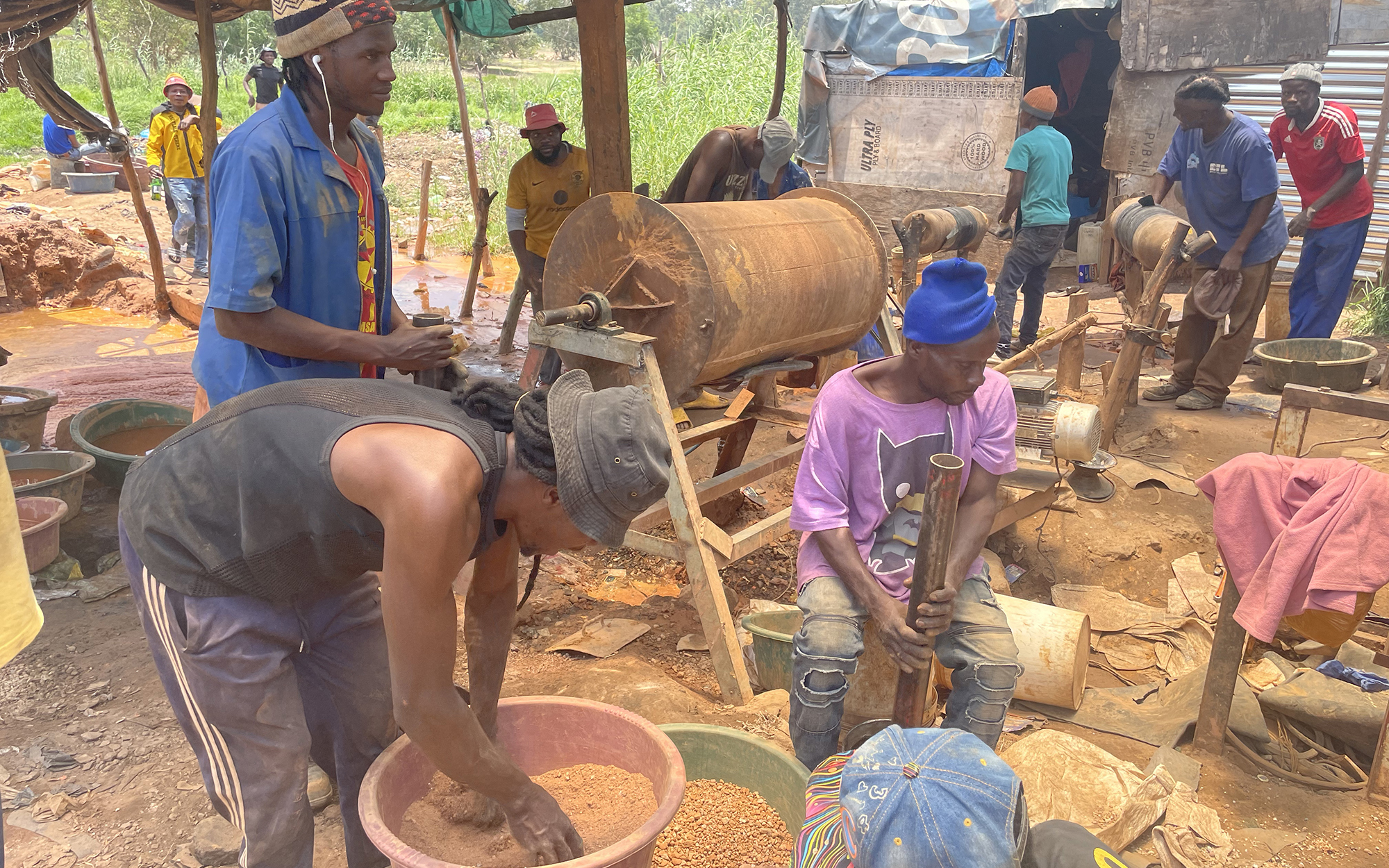
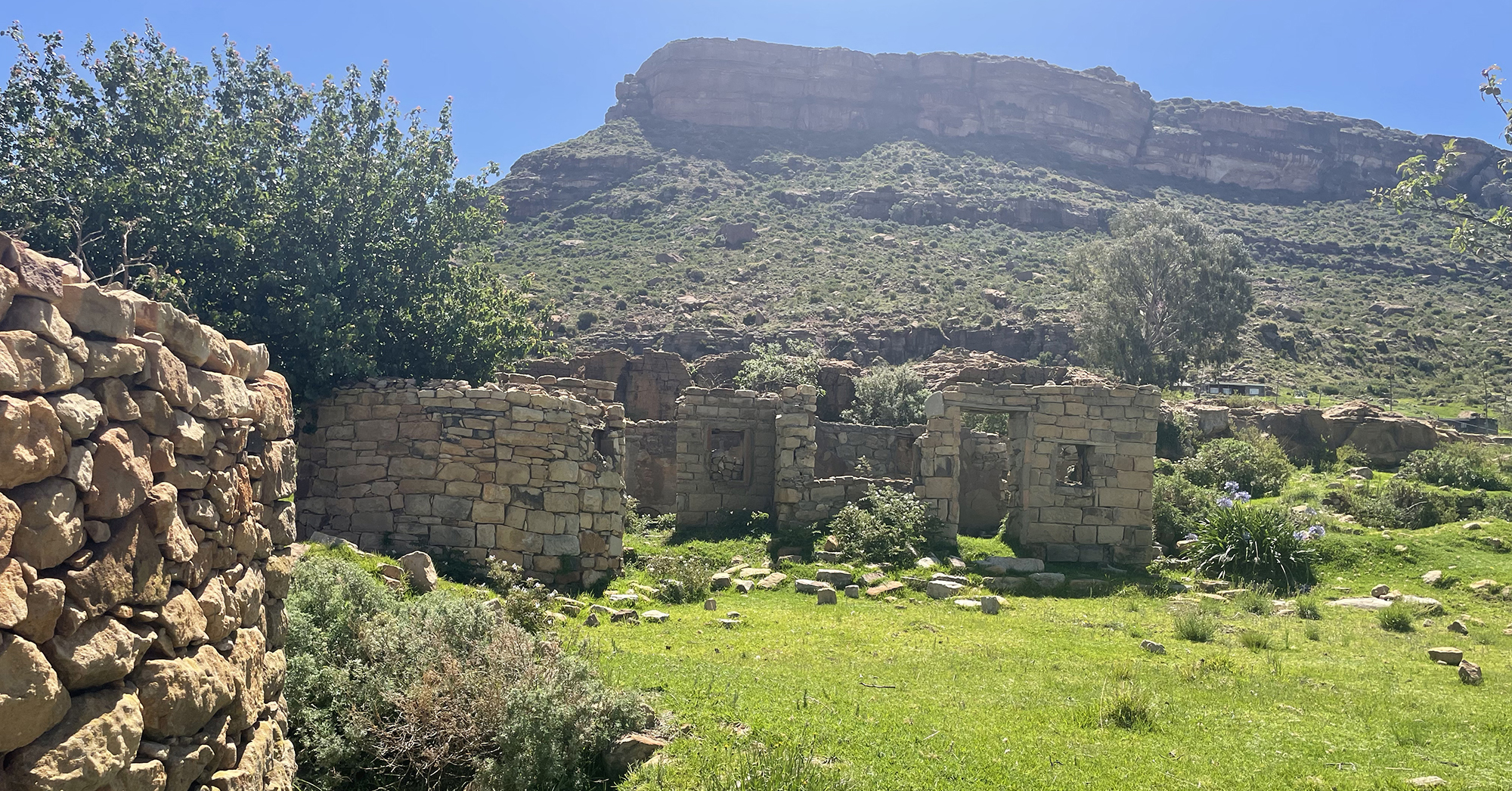
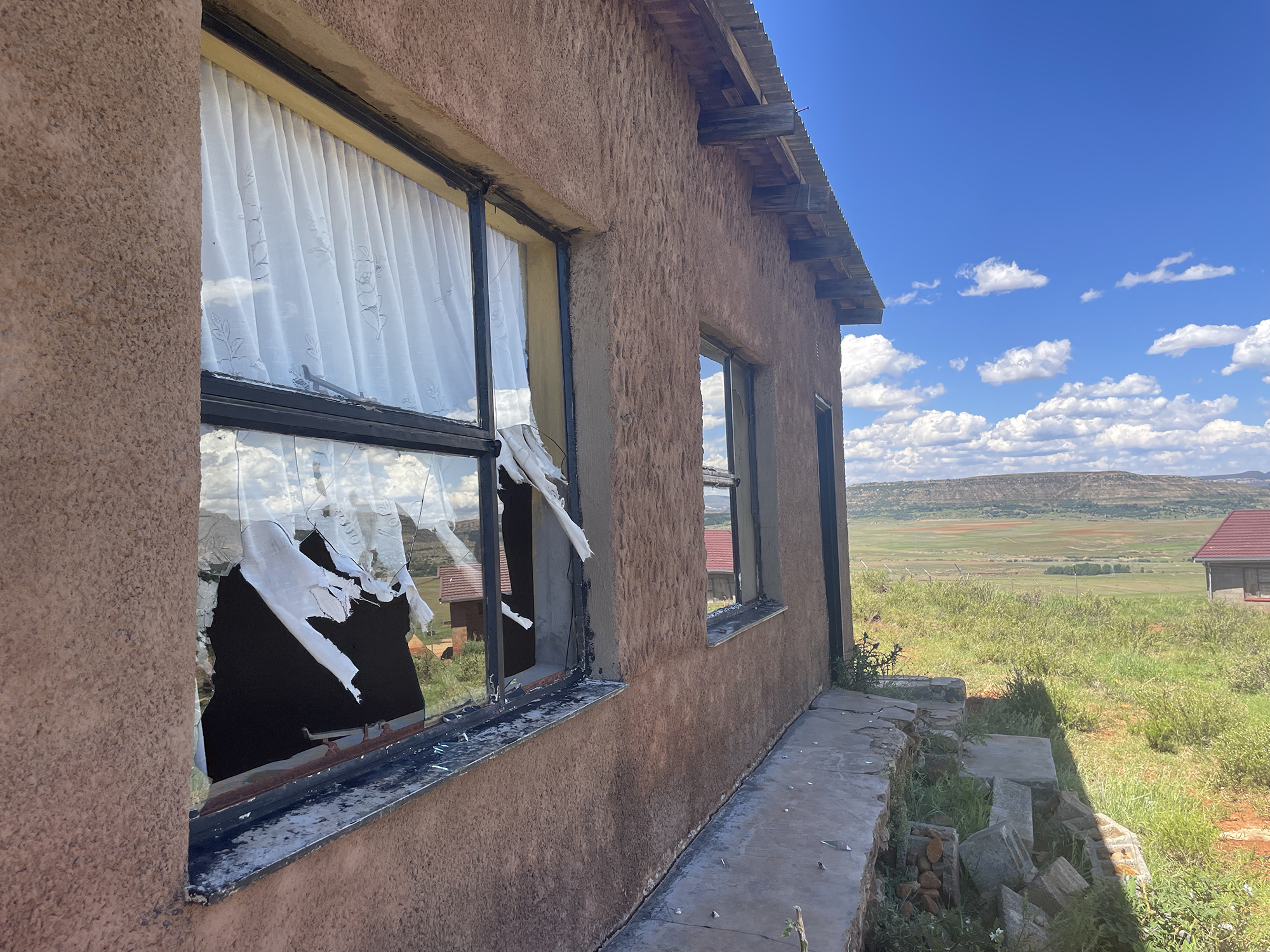
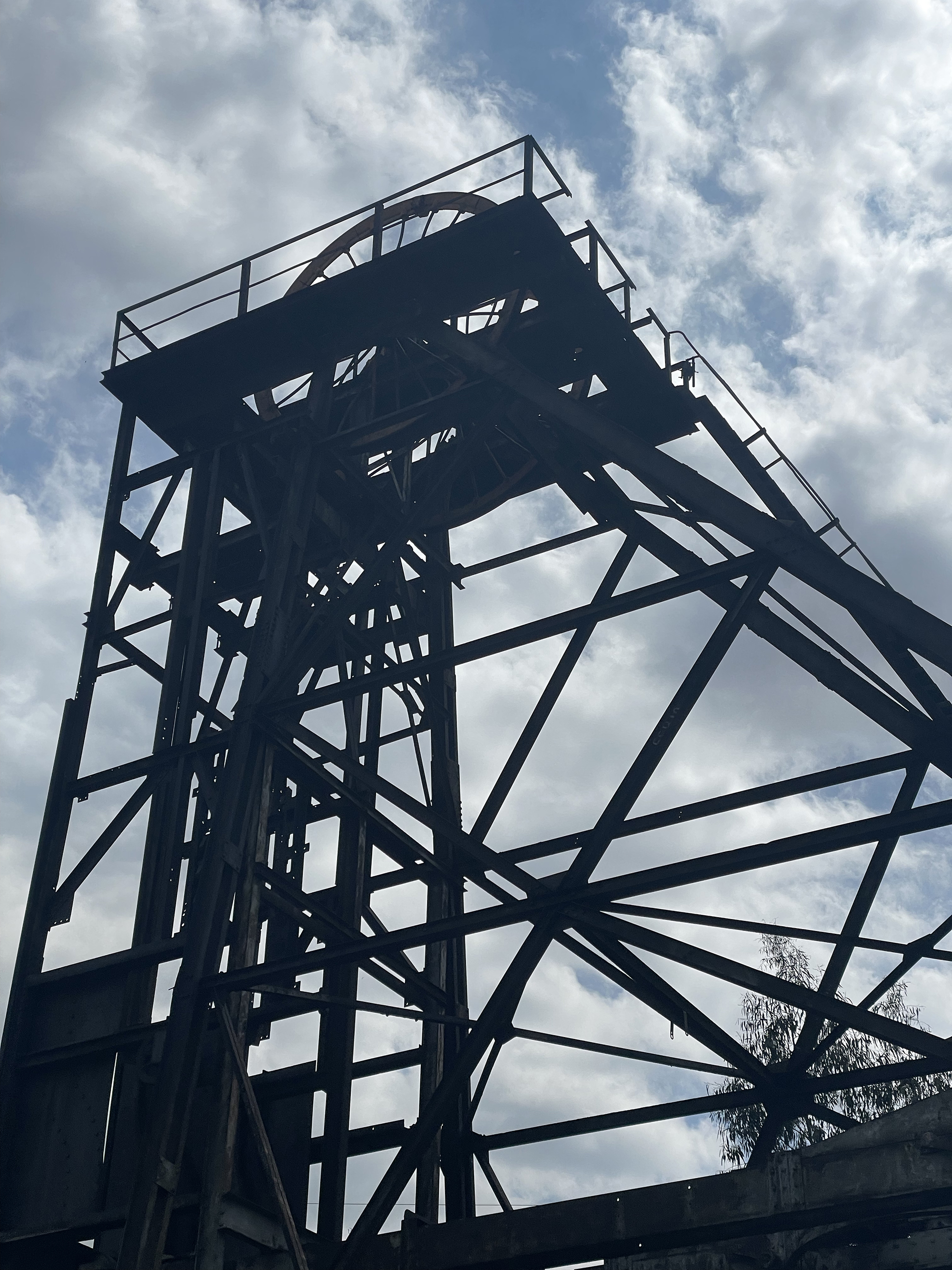














 Become an Insider
Become an Insider
Comments - Please login in order to comment.